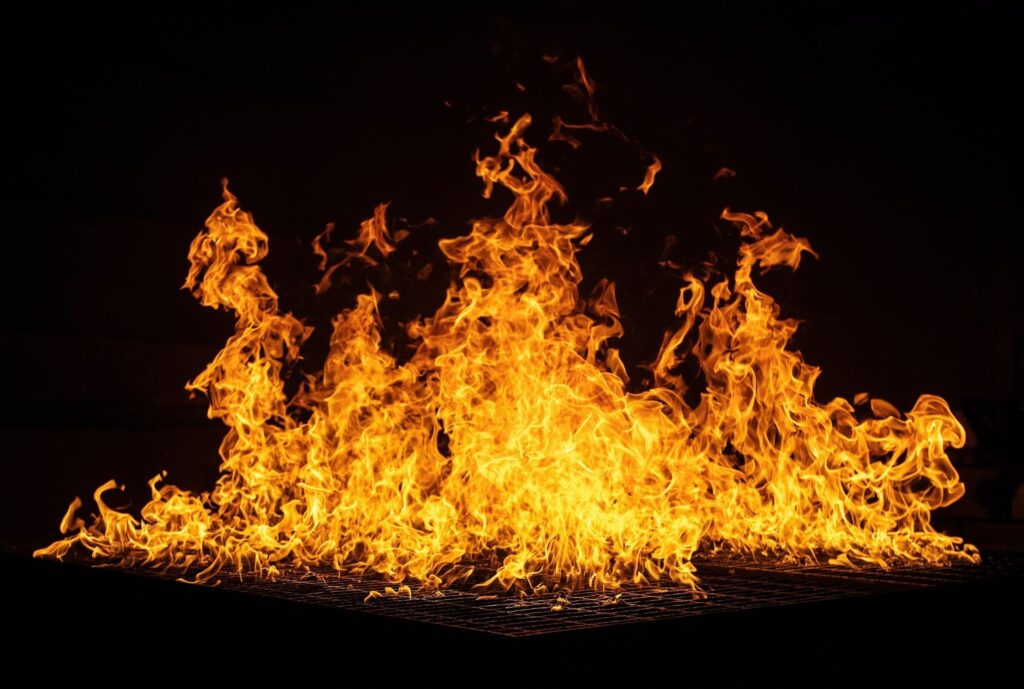What Are Flammable Liquids?

If you work in industries with flammable liquids, you need to understand how to store and use these substances properly. This advice holds even if you don’t work with hazardous chemicals directly.
What are flammable liquids? How do you store and handle them safely? What are some examples of flammable liquids? We’ll answer these questions in this blog.
Categories of Flammable Liquids
Before we discuss the categories, let’s define what it is. According to the Globally Harmonised System (GHS) for the classification and labelling of chemicals, a flammable liquid is a liquid that has a flashpoint of not more than 93 degrees Celsius.
A flashpoint is a minimum temperature at which a liquid forms a vapour above in sufficient concentration to ignite. A lower flash point means a liquid is more hazardous and flammable.
Flashpoint is not to be confused with a boiling point which is the temperature at which the vapour pressure of a liquid equals the pressure surrounding the liquid, and the fluid changes into flammable vapours. The flammable vapour, when mixed with air, can ignite or explode.
According to their flashpoints, the Globally Harmonized System (GHS) divides combustible substances into four categories. When you read a safety data sheet (SDS) for a chemical, you will see these categories:
- Category I flammable liquids have flash points less than 23 degrees Celsius and an initial boiling point of less than or equal to 35 degrees Celsius. These are incredibly flammable liquids and vapour.
- Category II flammable liquids have flashpoints less than 23 degrees Celsius and an initial boiling point of more than 35 degrees Celsius. These are highly flammable liquids and vapours.
- Category III flammable liquids have flashpoints more than 23 degrees Celsius to less than or equal to 60 degrees Celsius. They qualify these as flammable liquid and vapour.
- Category IV flammable liquids have flashpoints more than 60 degrees Celsius to less than or equal to 93 degrees Celsius. You call these combustible liquids.
Examples Of Flammable Liquids and Their Flash Points
Let’s discuss a few common examples of flammable liquids and their flashpoints. They order these liquids from the lowest temperature to the highest.
Gasoline
Gasoline is a typical example of a combustible liquid with a flashpoint of -43 degrees Celsius. It is highly flammable, so you must take great care when storing this flammable liquid.
Acetone
Acetone has a low flash point of -20 degrees Celsius, and above this temperature, the liquid only needs a 2.5 per cent concentration in the air to cause an explosion. For this reason, you need to store acetone in a temperature-controlled environment.
Ethanol
Ethanol has a flashpoint of 16.6 degrees Celsius, a temperature that is a little bit below room temperature. Use ethanol only in well-ventilated areas and in case of leaks.
Diesel
Diesel has a high flashpoint from 52 degrees Celsius to 96 degrees Celsius. It is considered relatively stable and non-flammable in most environments.
How To Store Flammable Liquids Safely
Safe storage of hazardous and flammable liquid storage is something that you need to take seriously as storing them in the wrong way can result in injuries, or worse, lost lives. If you are storing flammable liquids, be guided by the AS 1940:2004 — the storage and handling of class 3 flammable and combustible liquids. The storage guidelines are lengthy, but the following are the takeaways:
- Store flammable liquids below their flashpoint and away from any ignition source. Make sure to consult the chemical’s SDS for information on their varying flashpoints.
- Make sure the storage area has good ventilation. Proper ventilation will prevent fires, accidental damage to your respiratory tract or nasty burns.
- The cabinets you store the chemicals in should be far from ignition sources, including cigarettes, electrical tools, etc. Talk to Ecospill to ensure you have a cabinet that meets the regulations.
- Your cabinets should be secure, so they don’t fall over—secure means having heavy-duty base plates with holes so you can fasten them to the ground.
- Your outdoor storage units must have sealed floors with rubber gaskets and fully welded seams if you store the chemicals outside.
Usage of Flammable Liquids
It’s one thing to store flammable liquids well, but you’ll have to use them at some point. When handling flammable liquids, the AS 1940:2004 outlines the guidelines you need to follow. There are specifics in place depending on which type of flammable liquid you’re going to use. These are some of them.
- High-level tank containers should have a fail-safe solenoid valve or any device that cuts off the supply except when the dispenser is in use.
- An easily accessible switch or circuit breaker should enable you to shut off power to all dispensing units. This switch should be located in a location far from the dispensing units.
- A dispenser with flammable liquids should be located 8 metres away from any above-ground volatile liquid storage facility. It should be 15 metres away from any point where tank vehicles are being filled.
Summary
Flammable and combustible substances like gasoline or diesel are an integral part of modern life, but they can pose serious consequences if you don’t handle them properly. There are countless stories about the deadly risks of mishandling flammable liquids, from a petrol pump fire to factory blazes.
Knowing the basic properties of these dangerous liquids and how to store and handle them can go a long way in circumventing possible fires and explosions. Do you want to know more about flammable liquids and how to manage them? For further information, visit our website today.
